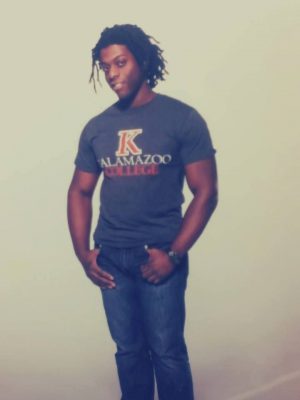[Hear more from Matt Thieleman in a TEDx Talk from Sept. 8, 2018.]
It’s an experience many Kalamazoo College alumni can relate to: spending four years working and learning with amazing and inspiring classmates, then going your separate ways, never to have the same sort of connection again.

But for Karman Kent and Matt Thieleman, both ’07, a convergence of opportunity and expertise launched a post-college professional collaboration aimed at bringing the beneficial effects of mindfulness to stressed-out college students – an experience the two spoke about before an audience of students and fellow alumni in Dewing Hall on Homecoming Friday.
It was the first in a planned K-Talk series that Joan Hawxhurst, director of the College’s Center for Career and Professional Development, said will make it possible for alumni to share their ideas and experiences with the K community.
The project that renewed the ties between the two former classmates began after Kent joined Morehead-Cain, a foundation that provides full-ride merit scholarships at the University of North Carolina at Chapel Hill. Now the foundation’s director of scholar selection, Kent found a community of high-achieving students, not unlike those at K, who were often severely stressed by the difficulties of meeting their own high expectations and those of others.
Thieleman, meanwhile, had launched a career in social media marketing, then discovered a passion for developing future leaders through training in mindfulness, the practice of focusing one’s attention on what is happening in the current moment. He launched a Nashville-based consultancy that, as he puts it, helps people recognize that actually “being present” in a situation is key to developing the ability to see the way forward in an increasingly noisy world.
Kent – seeking a way to get students to open up about their troubles – reached out to Thieleman, who brought his expertise to UNC for a seminar. He and Kent said they saw a surprising and “profound” transformation in the Morehead-Cain students who participated, with 95 percent recommending the program to others.
Thieleman continues to counsel students. And Kent said the foundation was so impressed with the results that it has hired a full-time adviser to coach its scholarship recipients in mindfulness techniques.
Hawxhurst said Kent and Thieleman’s experience points out the potential power of the K experience during and after college. Kent concurred.
“At Morehead-Cain … the alumni network is one of the biggest benefits to being in the program,” she said. “We have so many amazing alumni here at K. If we can have that kind of openness to working together, it can be transformative.”














